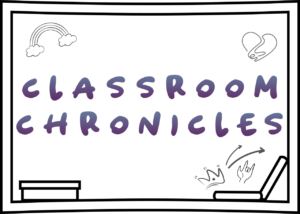The future of education is inextricably tied to technology. The rise of internet-connected devices has revolutionized the way students learn and opened up new possibilities for educators. As technology continues to evolve, we can expect even more innovation in the education industry, from tablets in classrooms to assistive technology devices to augmented reality and virtual reality.
Tablets in classrooms have become an essential tool for many students. They’re versatile, portable, and capable of serving as a video player, word processor, or educational gaming device. According to a Pearson Education study, 78% of elementary school students used tablets in their schoolwork in 2014. The use of tablets by middle and high school students also increased. However, the challenge for teachers is to leverage these devices to update existing education practices and explore new, innovative ways to use them in the classroom. Liberal arts graduates who choose to become teachers can make a significant impact on their students by embracing tablets and expanding their learning opportunities.
Assistive technology devices are essential for students with disabilities. These devices, such as alternative input devices and speech-to-text technology, provide the educational support they need to be successful in school. Technology advances like easy-to-read fonts also support those with minor learning disabilities, breaking down barriers that once separated students based on their ability to learn. Teachers who leverage these innovations will be on the forefront of education leadership, empowering all their students to succeed.
Augmented reality and virtual reality technologies are set to transform the way students learn. Google’s Expeditions app and platform released in 2017 allows teachers to use inexpensive cardboard VR viewers to bring immersive learning experiences to their classrooms. AR/VR learning is particularly well-suited to students in STEM fields, providing access to virtual dissection, the exploration of microscopic organisms, and other educational applications. These technologies also allow students to explore the world and historical events in a way that was once impossible, providing a new level of engagement that can inspire lifelong learners.
Voice platforms like Google Echo and Amazon Alexa also have classroom applications. They provide students with instant answers and can be used to play educational games, conduct polls of their classmates, and chat with students across the world. As these devices become more widespread, we can expect even more innovation in the way they’re used in the classroom.
Takeaway
In summary, the future of education is not only bright, but also constantly evolving with the advancement of technology. The integration of technology in education has become more critical than ever before, and it has revolutionized the way students learn and teachers teach. With the increasing availability of digital resources, educators who adapt to and incorporate technology in their teaching methodologies will be at the forefront of education leadership.
Moreover, graduates with a liberal arts degree and a passion for teaching can play a crucial role in shaping the future of education. With the help of technology, they can create a dynamic and engaging learning environment that fosters critical thinking, collaboration, and creativity. By leveraging the vast array of digital tools and resources, they can provide their students with new and innovative learning opportunities, enabling them to unlock their full potential.
In conclusion, embracing technology in education is no longer a choice but a necessity. The future of education belongs to those who are willing to adapt to change, to push the boundaries of traditional teaching methods, and to empower their students with the tools they need to succeed in a rapidly changing world.

